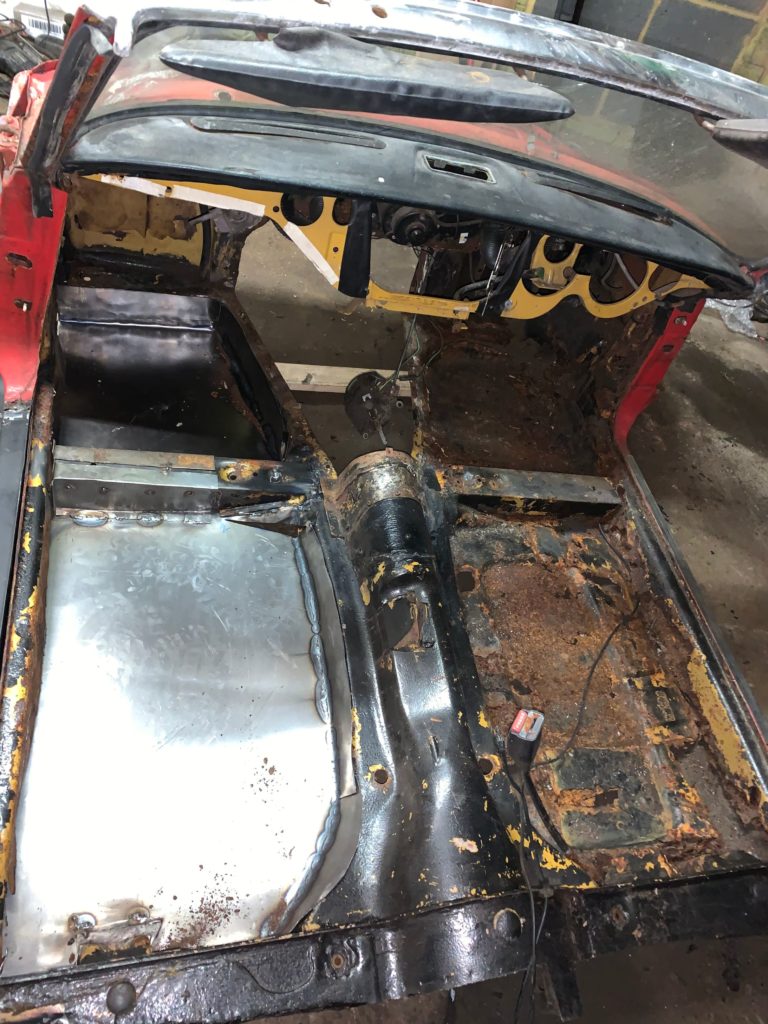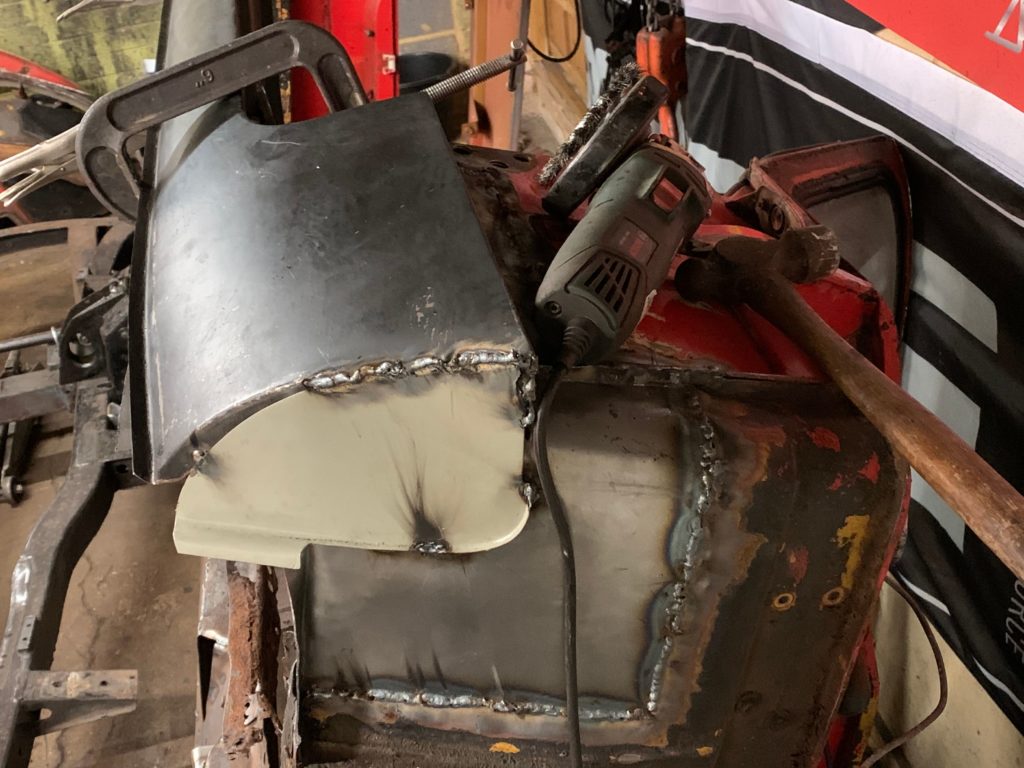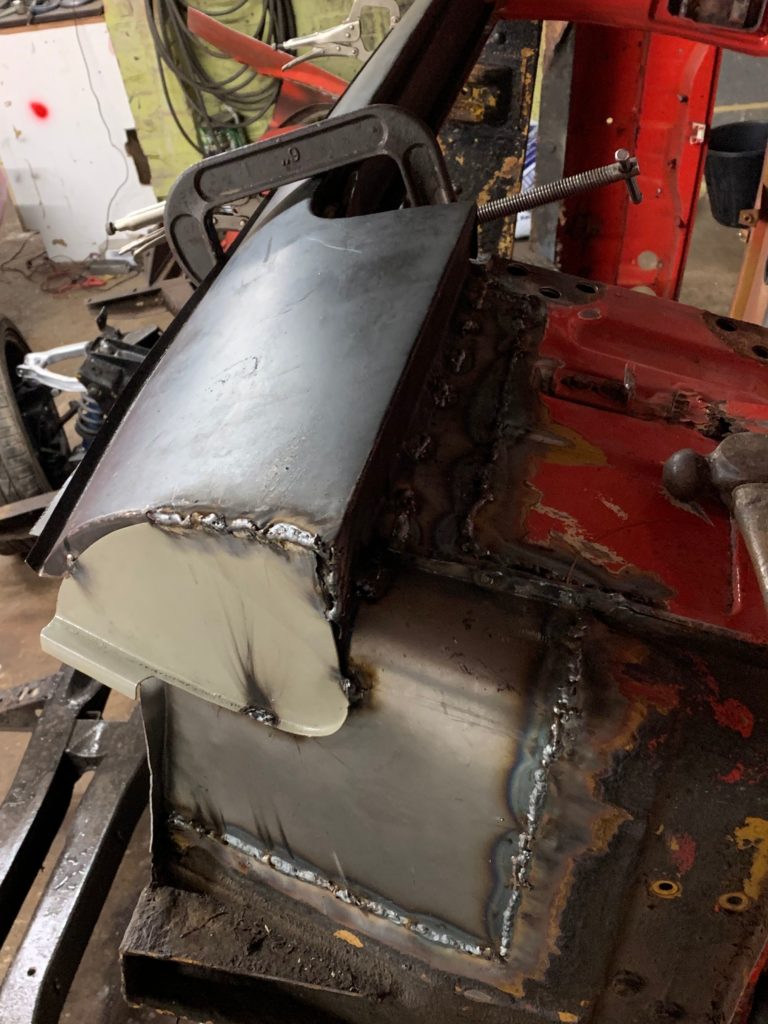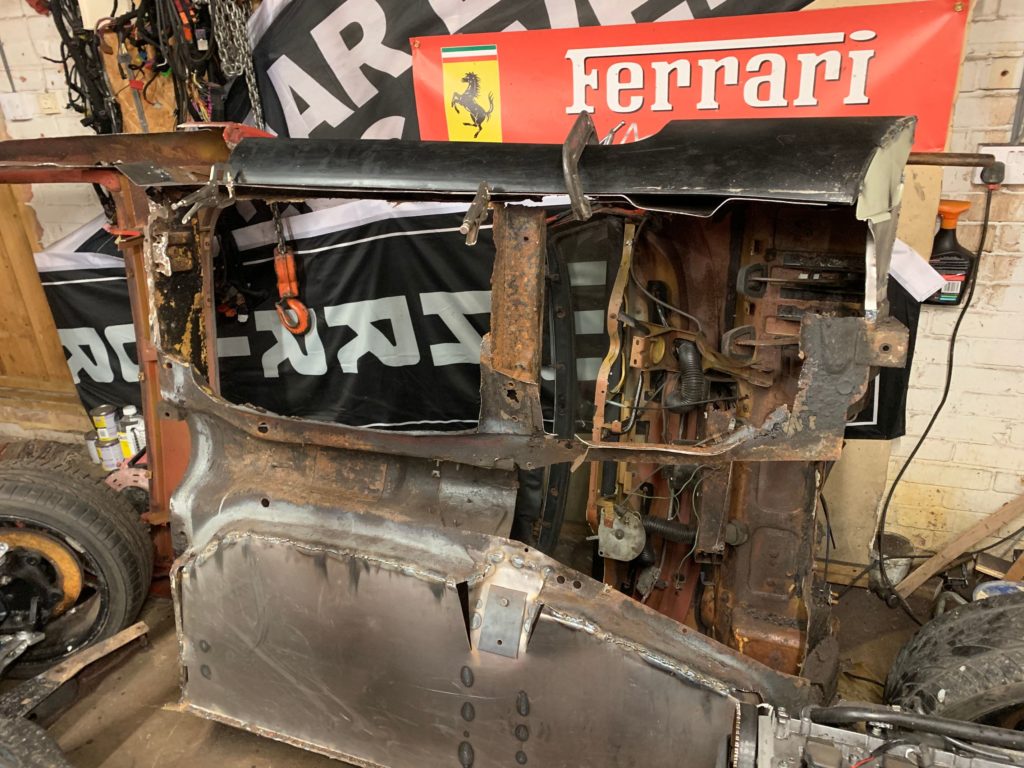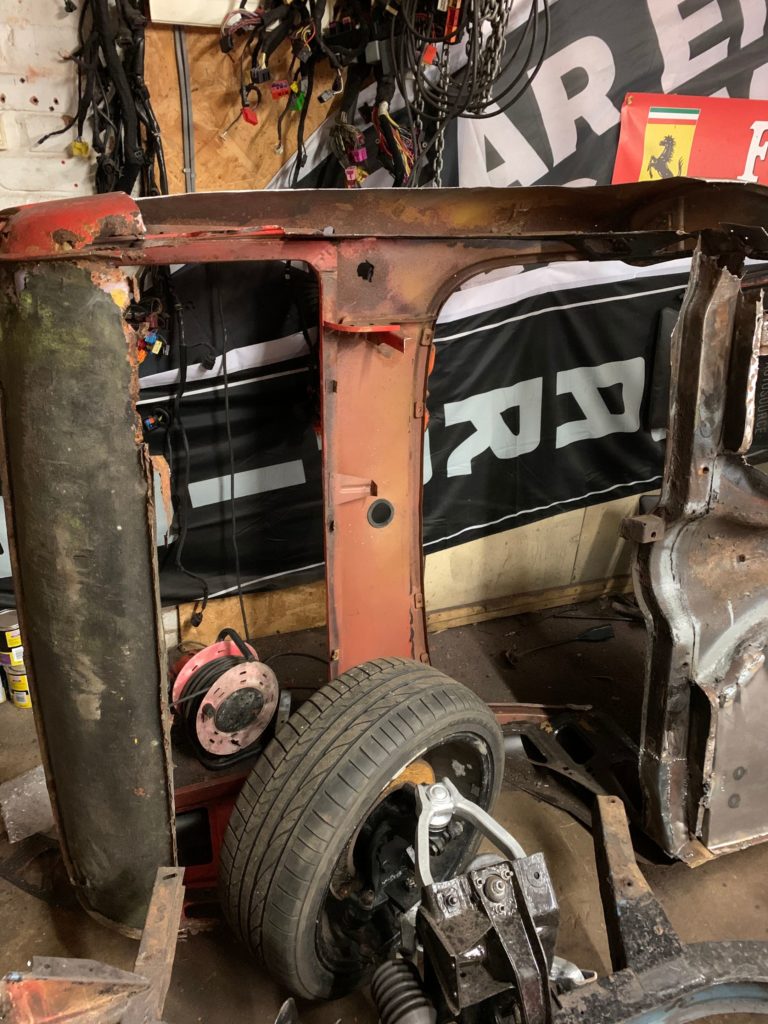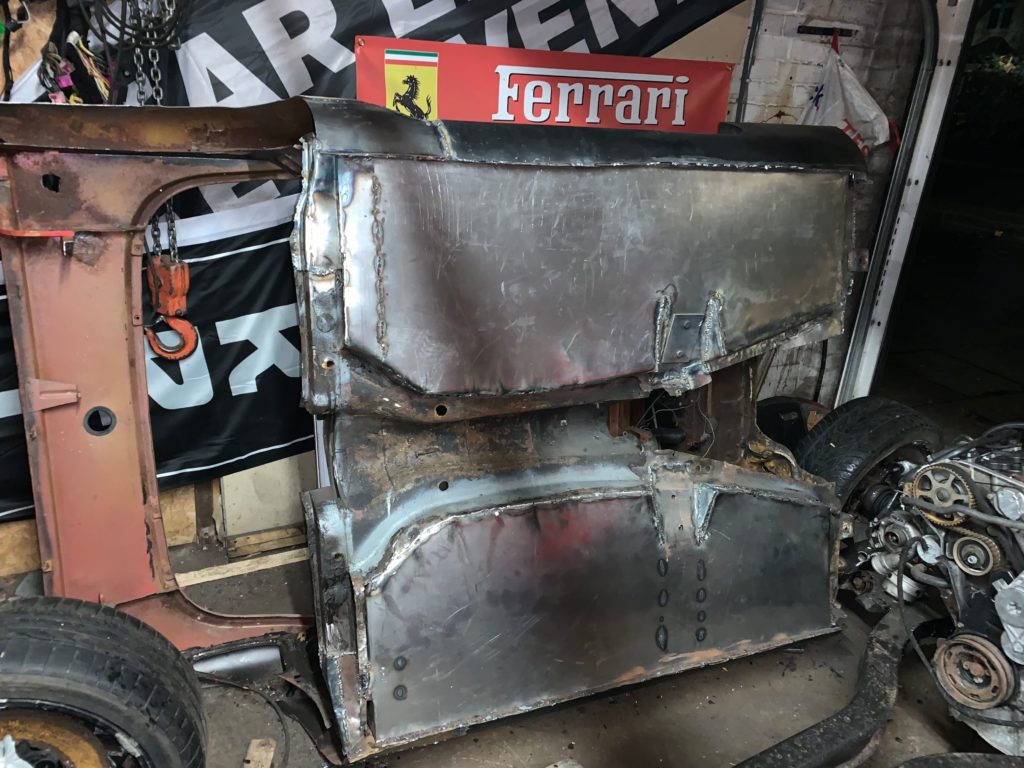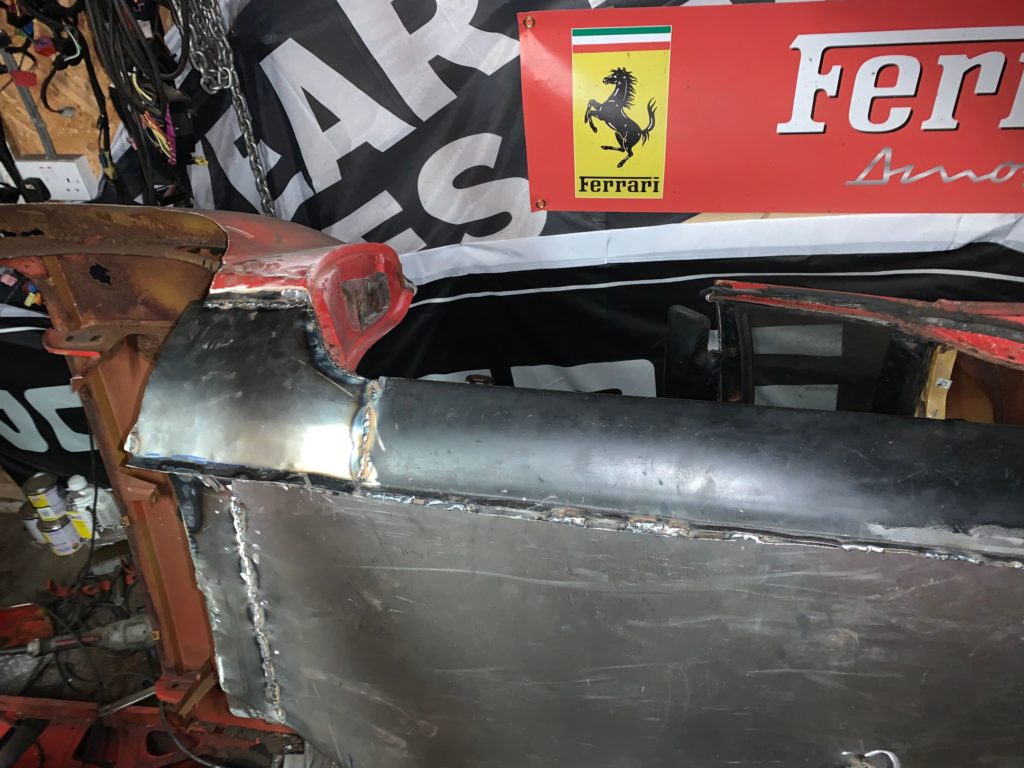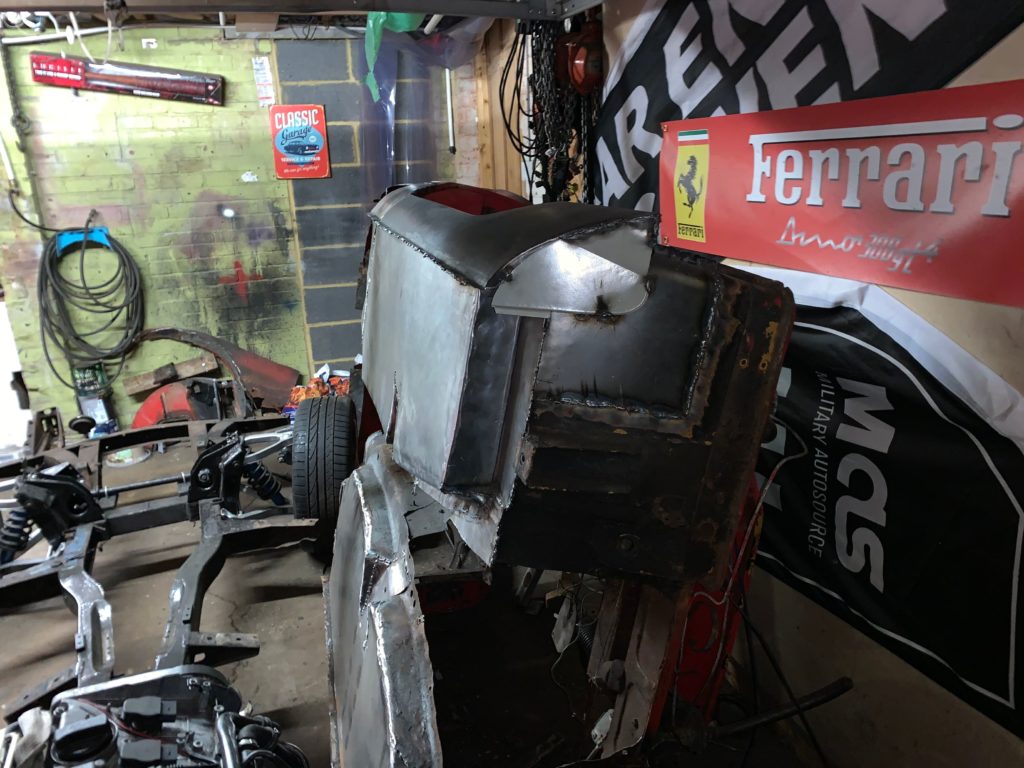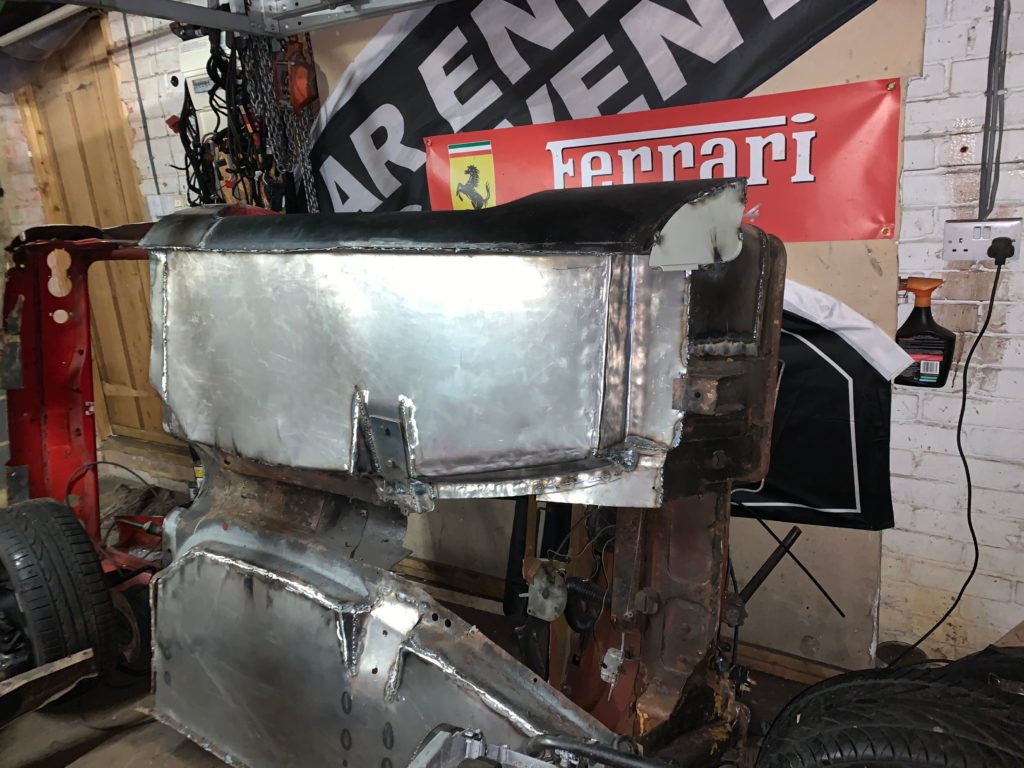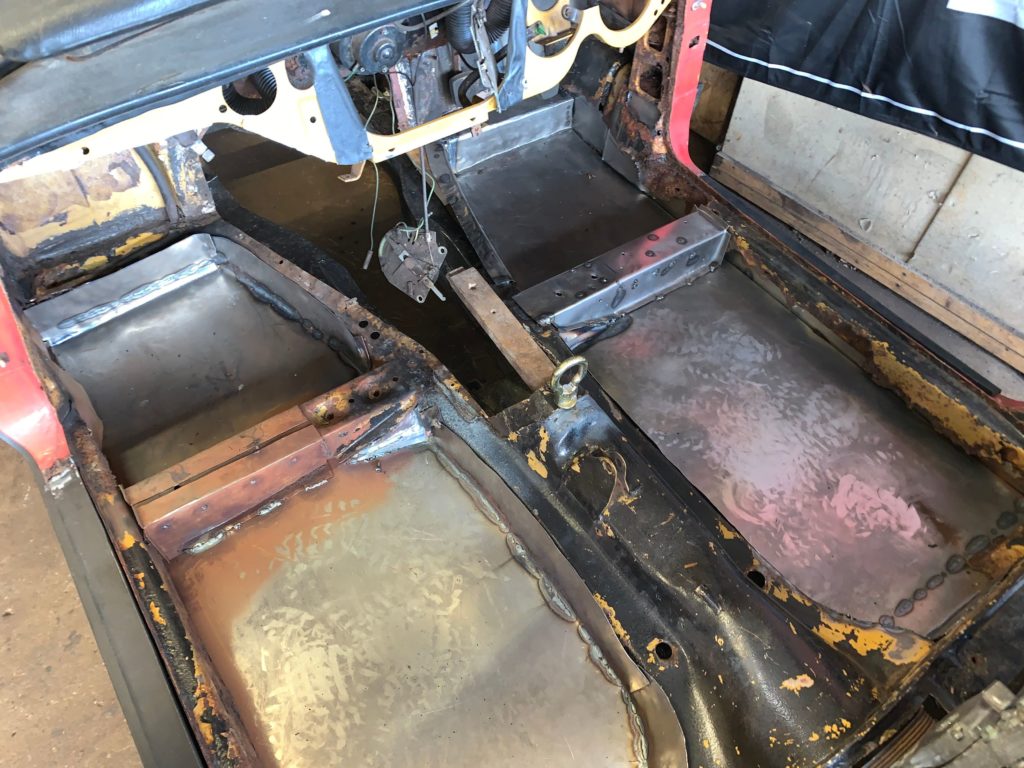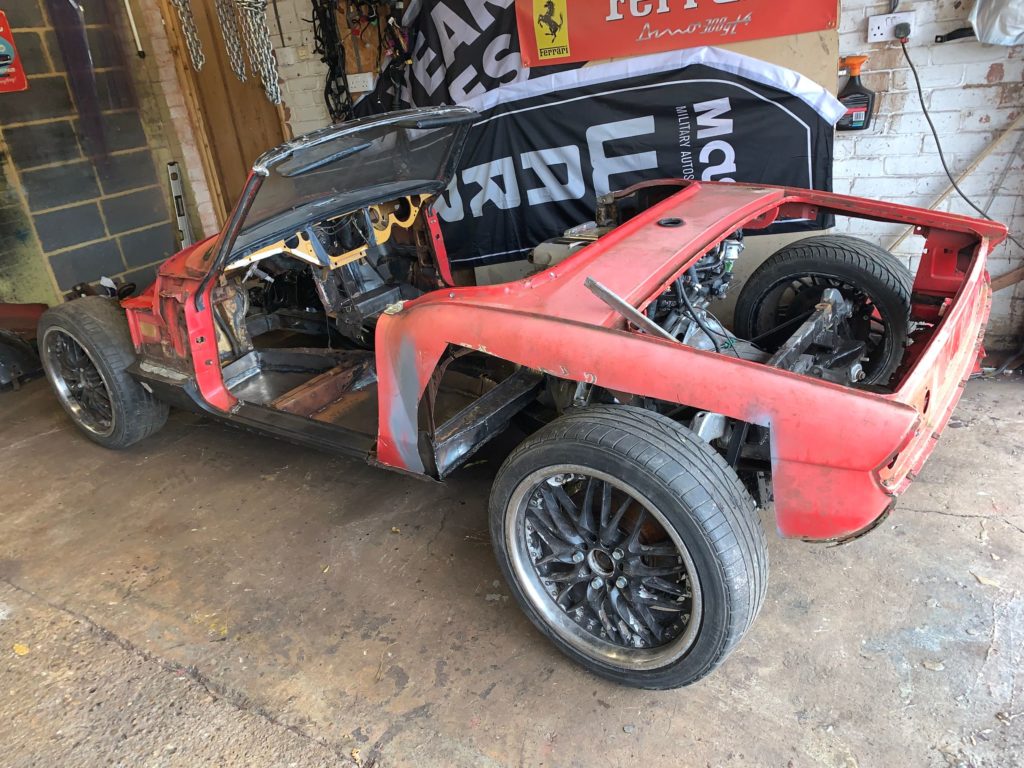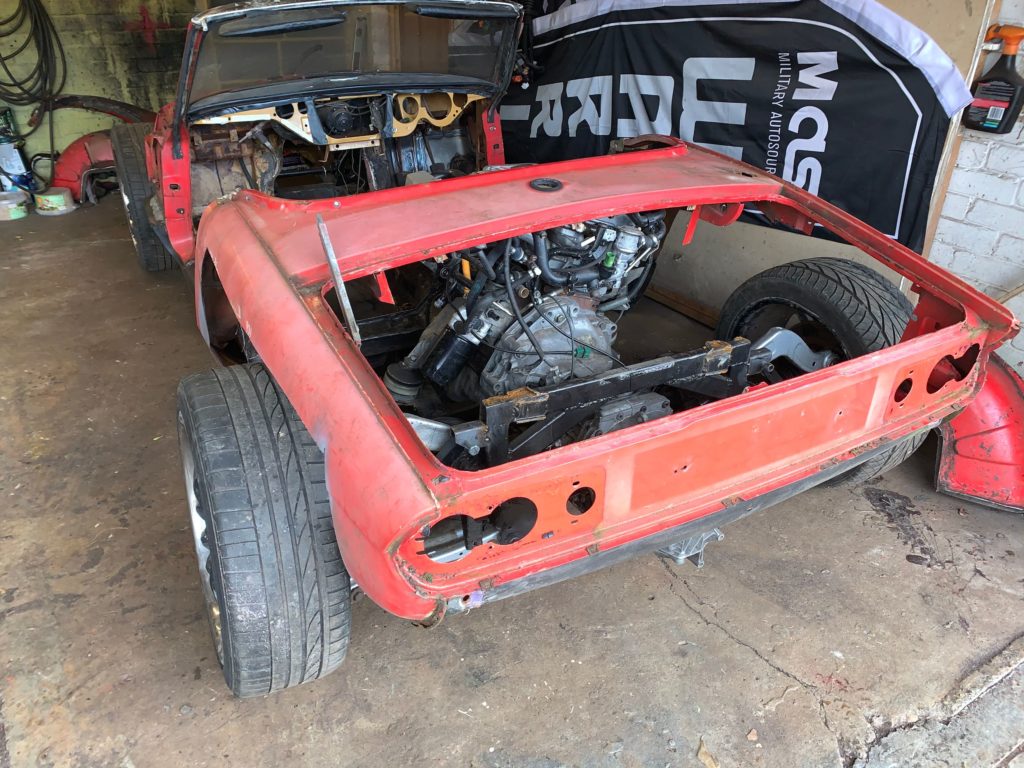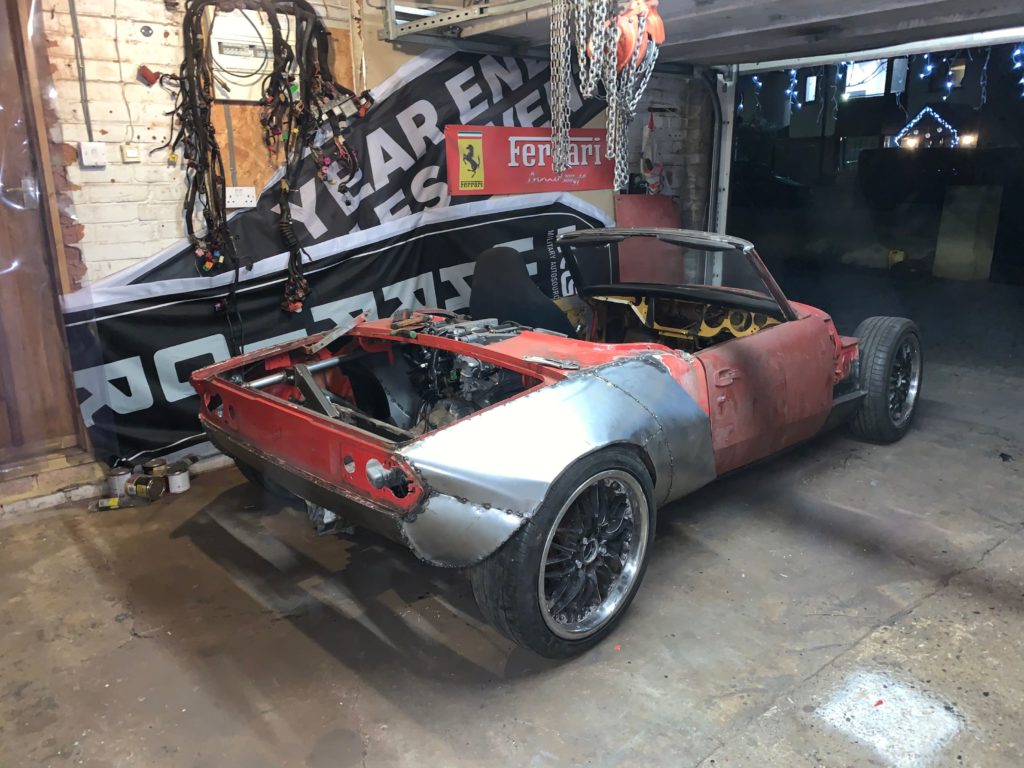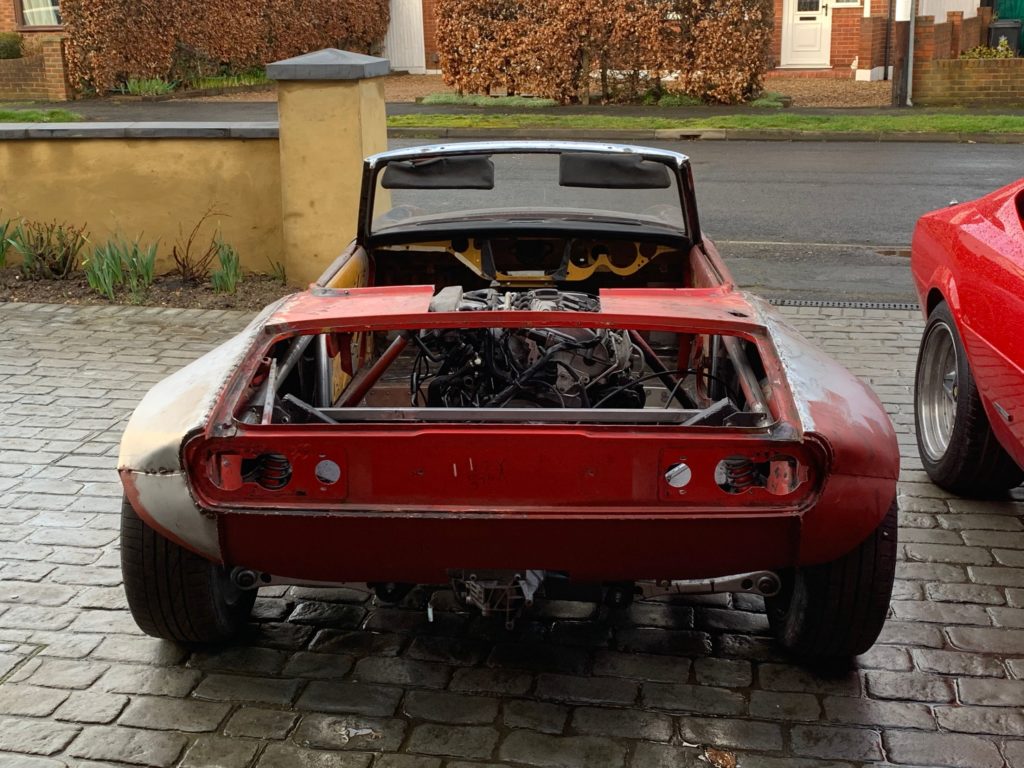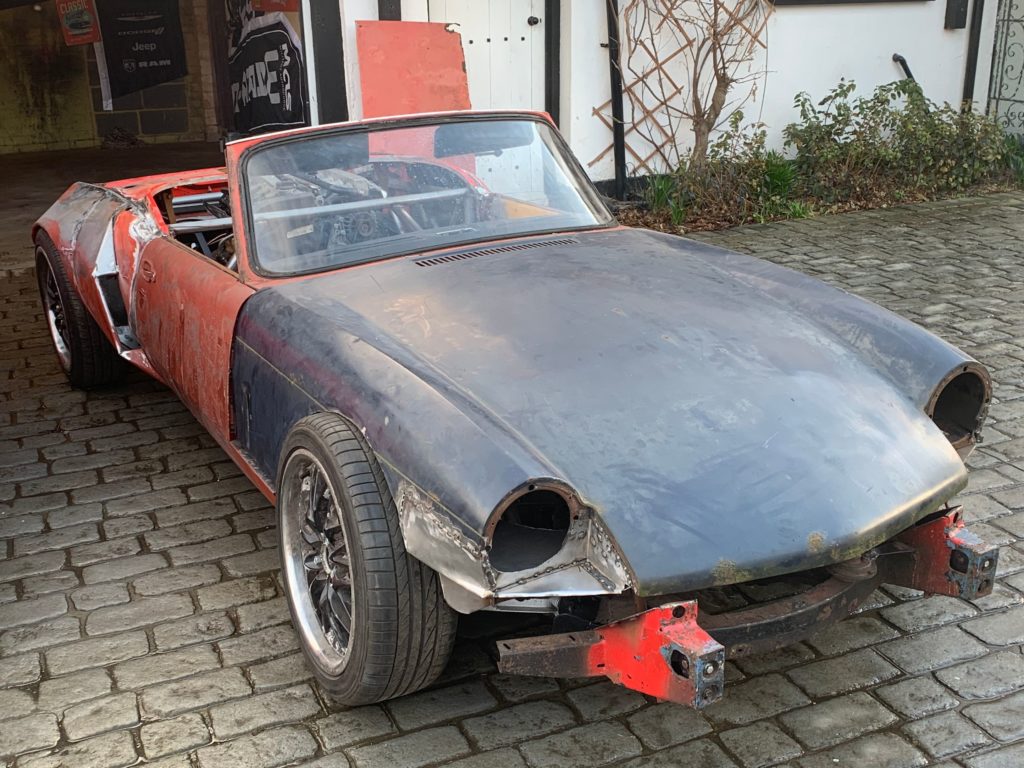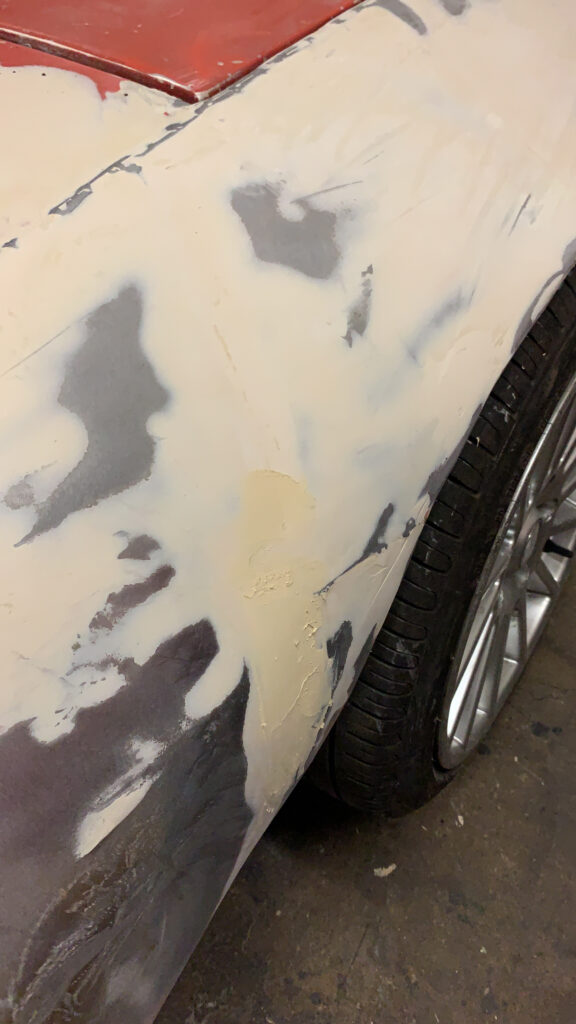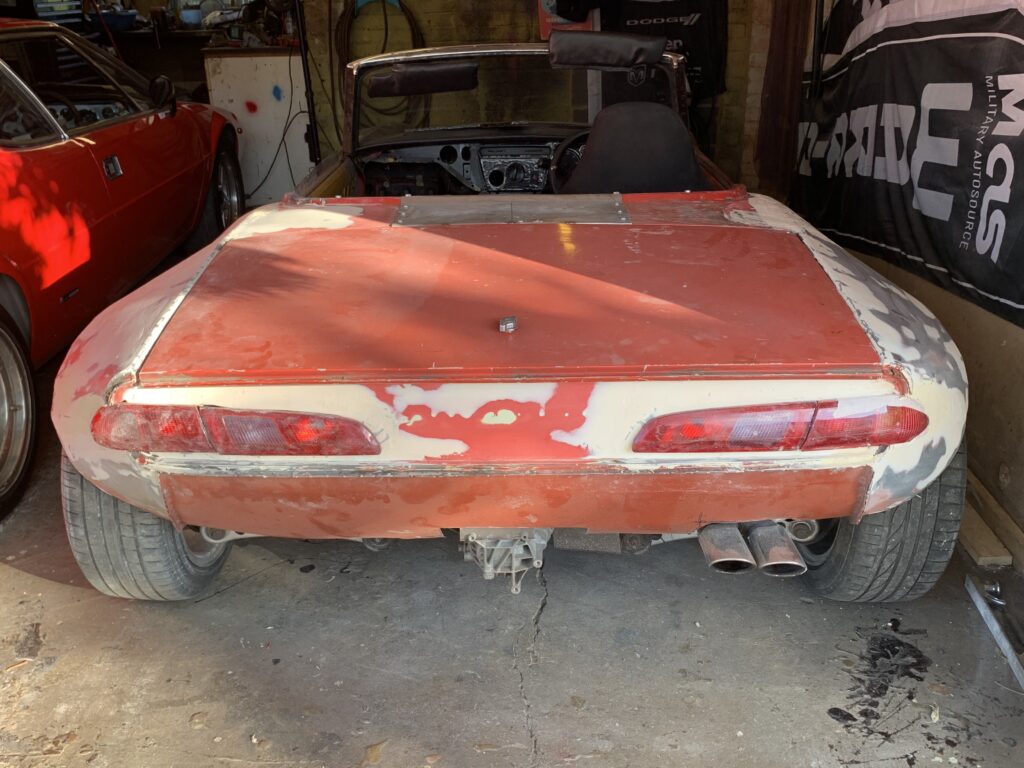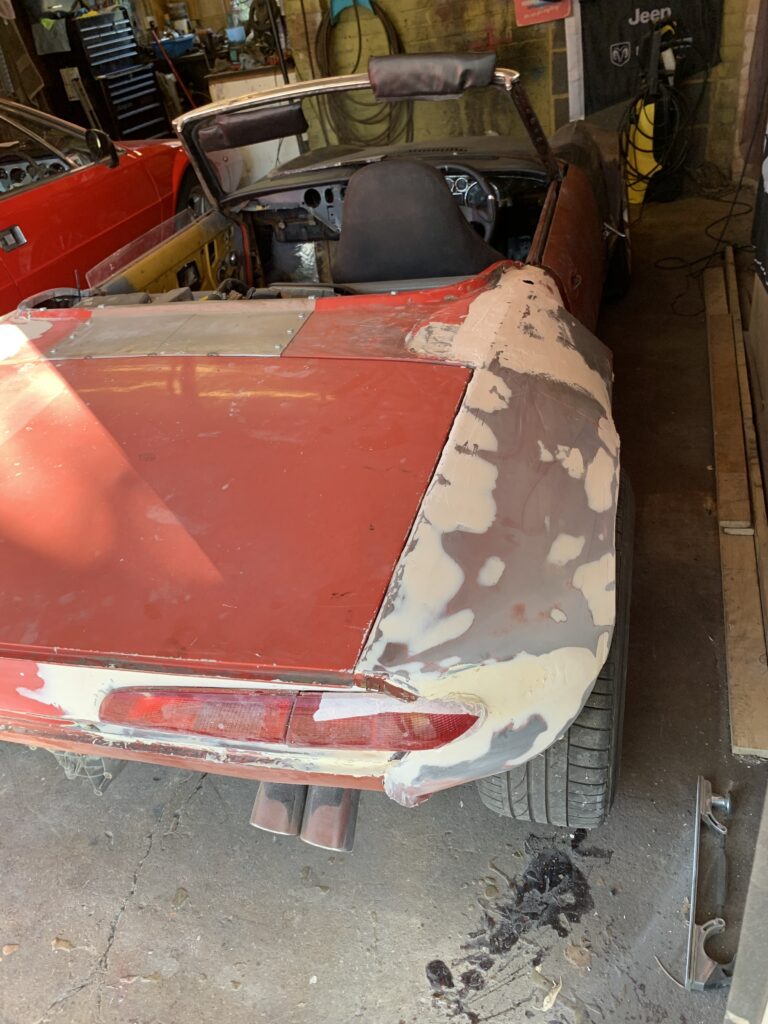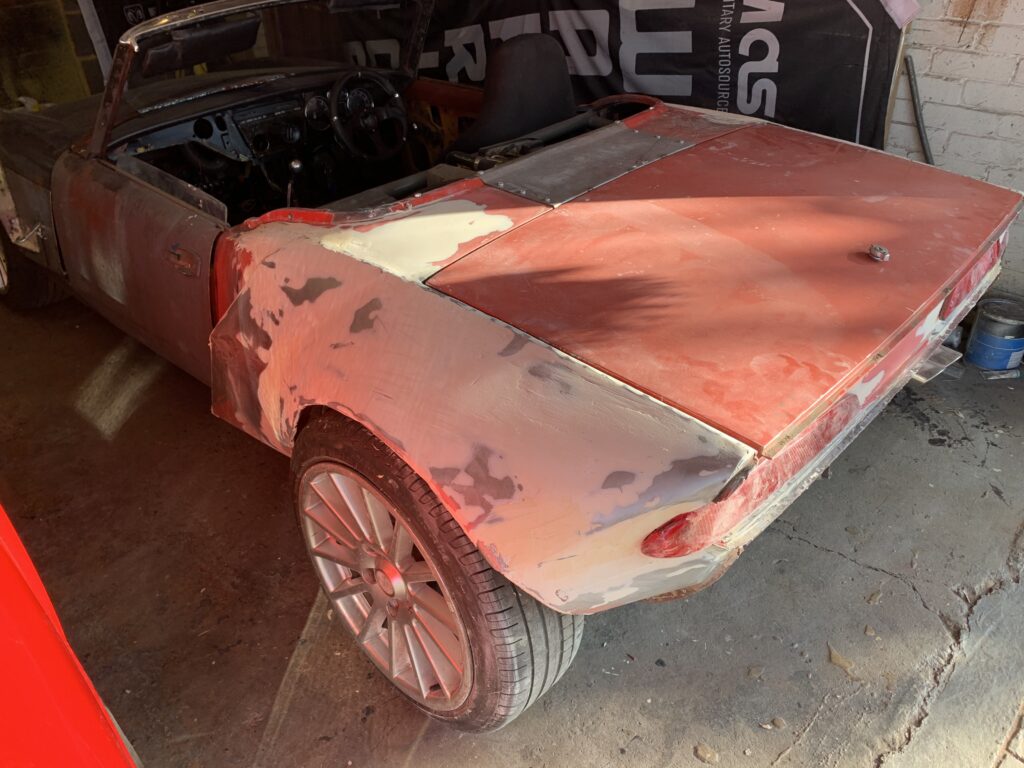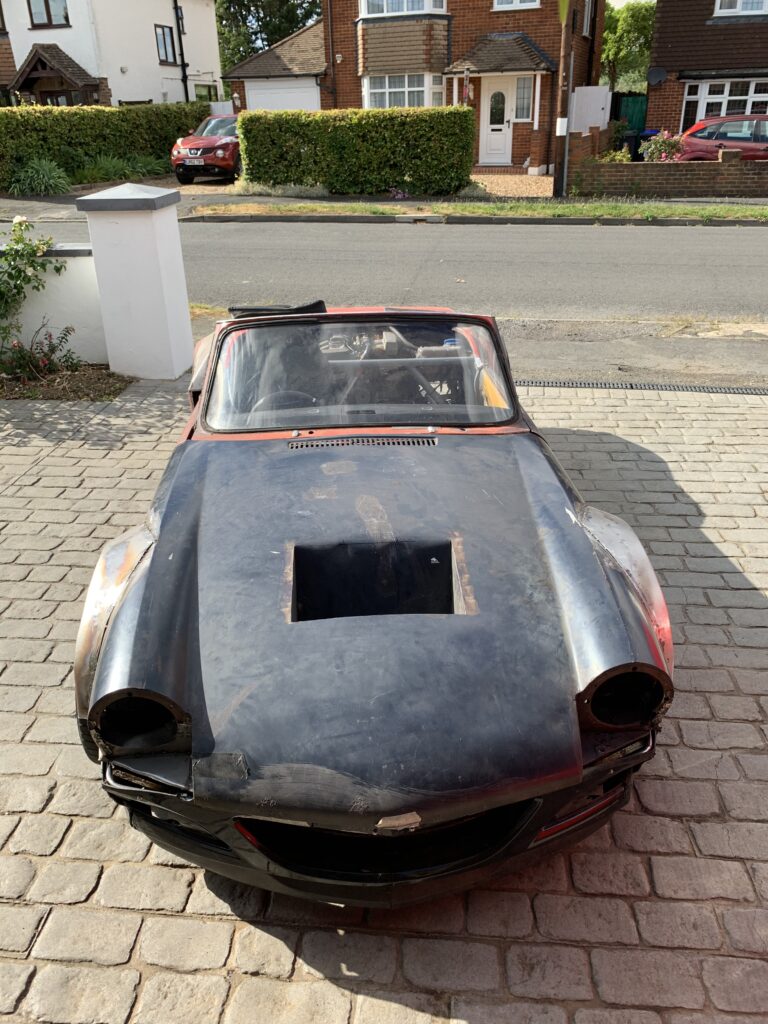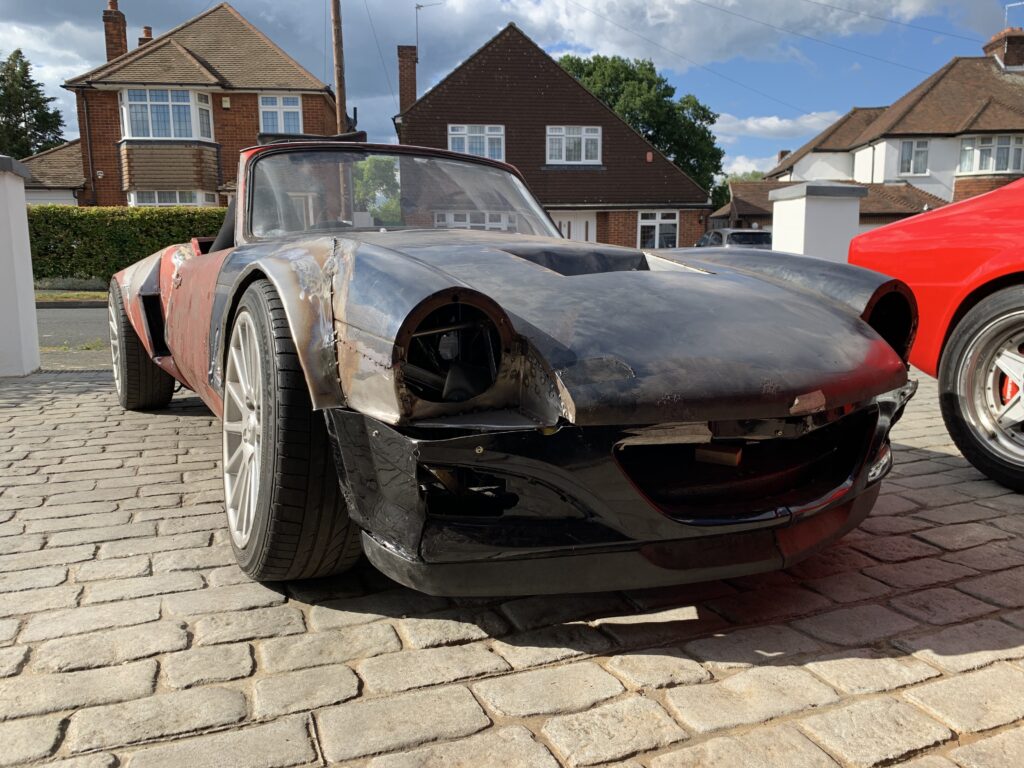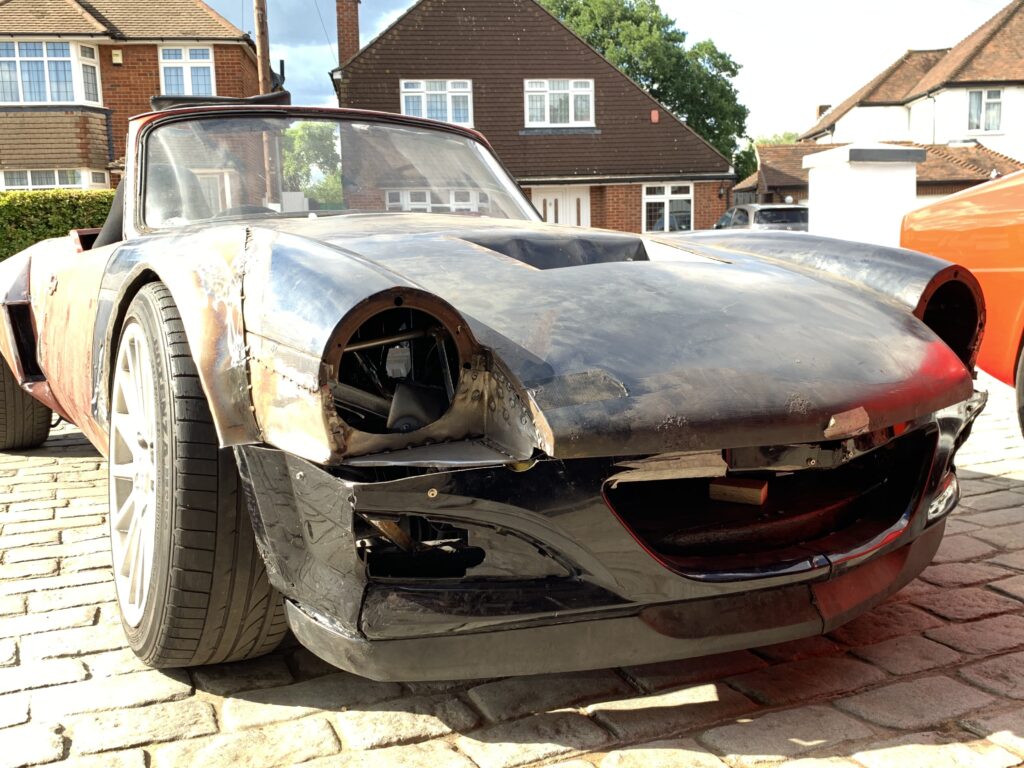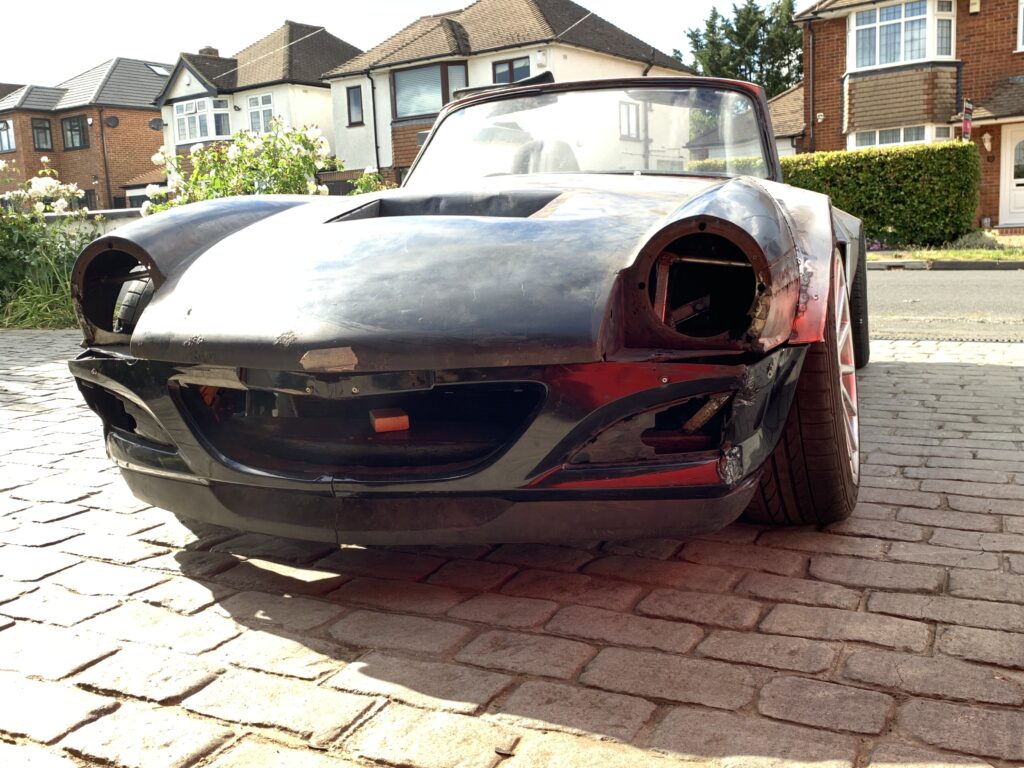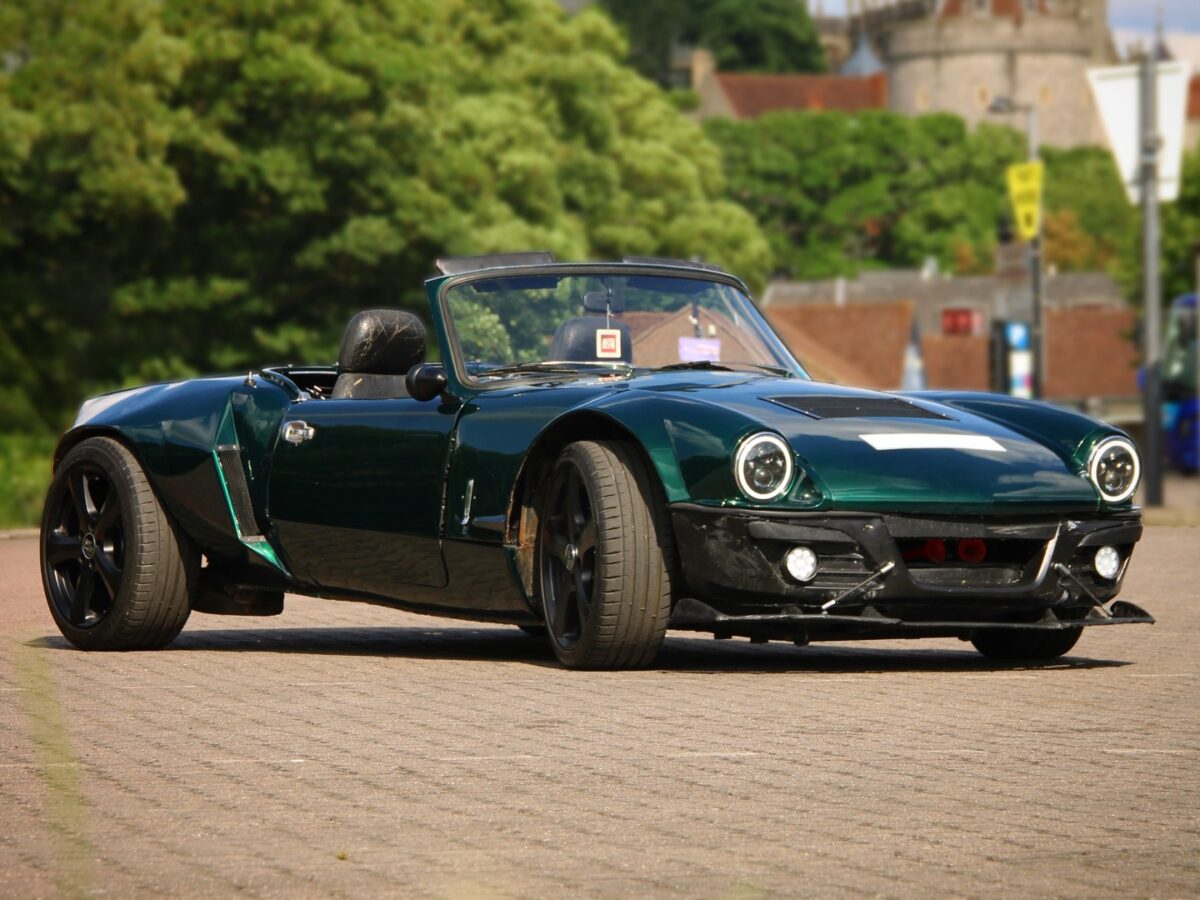
The Body
The body was rotten, both floorpans were more or less detached from the rest of the body, bulk head gone, rear arches gone, sills and inner sills gone… in any other world this car would have gone to the crusher.
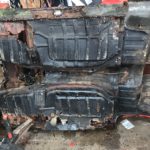
The only parts I bought were 2 outer sills and 2 sill end plates. The rest was made from 2.4m x 1.2m 18 gauge steel sheet.
The additional challenge with this car is that the boot/trunk space will occupy the engine and transaxle, so cutting out all the steel from the boot/trunk seriously weakened the rear end, which was already very bad dues to rust.
The danger, (as my friends on the internet pointed out) was that after welding up, the car would not sit properly on its chassis, the door gaps would be wrong.
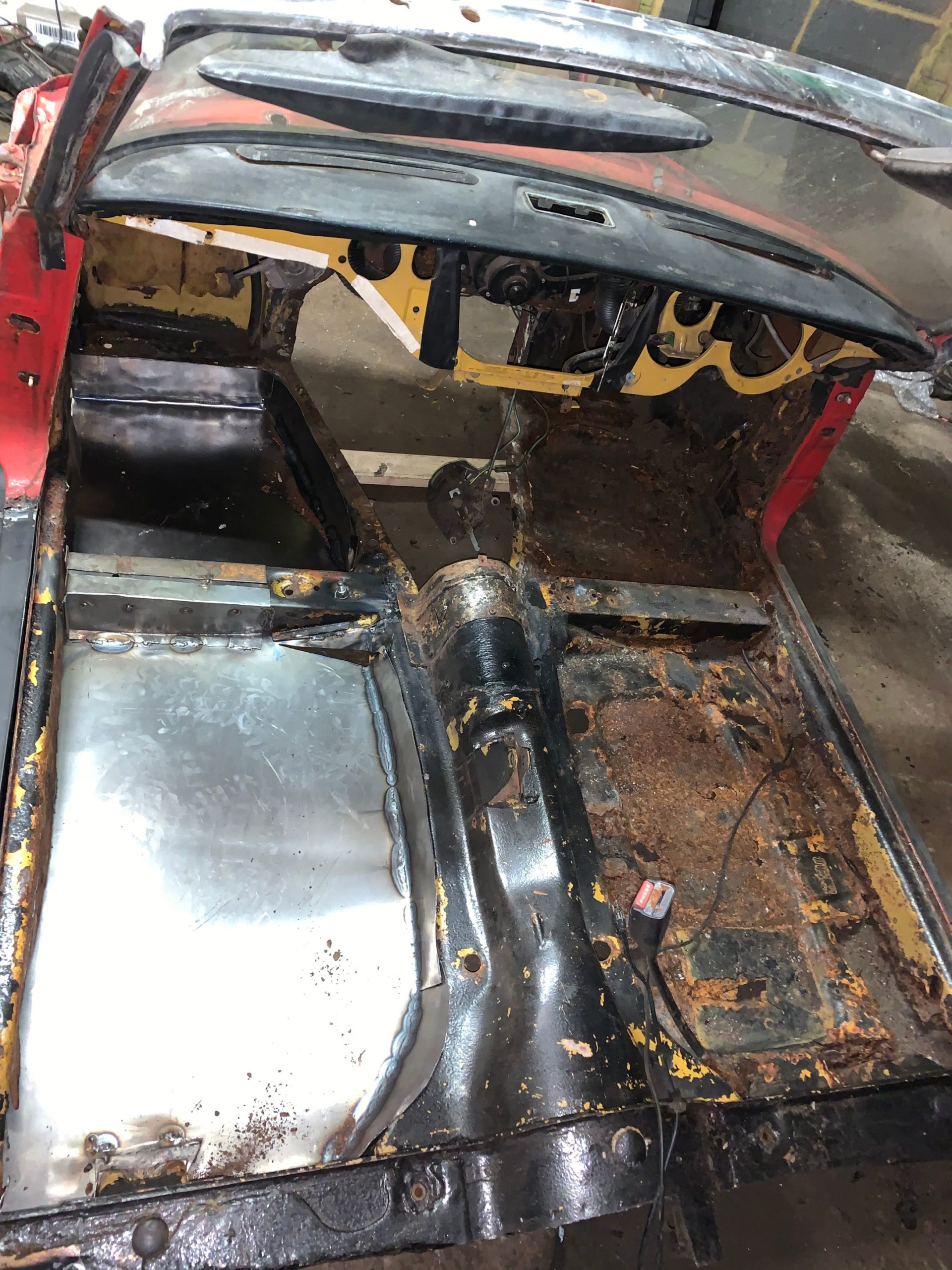
Grinding out the old floor and replacing with shiny new steel is very satisfying, I bet the neighbours loved the sound of the angle grinder..
After what seemed an eternity, the structure of the car was secure and the tub could be mounted on its chassis.
Then the fun started, creating the rear arches/fenders and internal frame to support the rear of the body.
The Spitfire uses Audi driveshafts and hubs, mated to an Audi tranasaxle, this means the rear track is 15cm, or 6 inches wider than a normal Spitfire. I also wanted the car to look as Spitfire’ish as possible. I ended up fabricating almost a completely new rear end.
17 July 2020
The body is now finished all the lost bits of welding sorted. The only job left is to source some 8mm steel round bar and reform the front wheel arches.
I have started the process of applying a thin film of body filler over the car, then the rubbing down starts, got to make the body dead smooth for paint.
The front of the car
I love the front of my little Spitfire, it looks so cool!
One of the most daunting jobs I did was removing the front over riders. These are the huge chunks of steel that hang off the front chassis member. Each one contains a pivot that lifts the bonnet, so they have to take a lot of weight, but I hated them, every time i walked past my car I would smack my ankle on one of them they had to go!
The answer turned out to be Audi TT bonnet hinges. I welded a bracket to the chassis and mounted the hinge at a slight angle, I had to make some stronger bonnet strengthening bars, these then bolted to the top of the TT hinges, and now the bonnet lifts and is supported with gas struts.
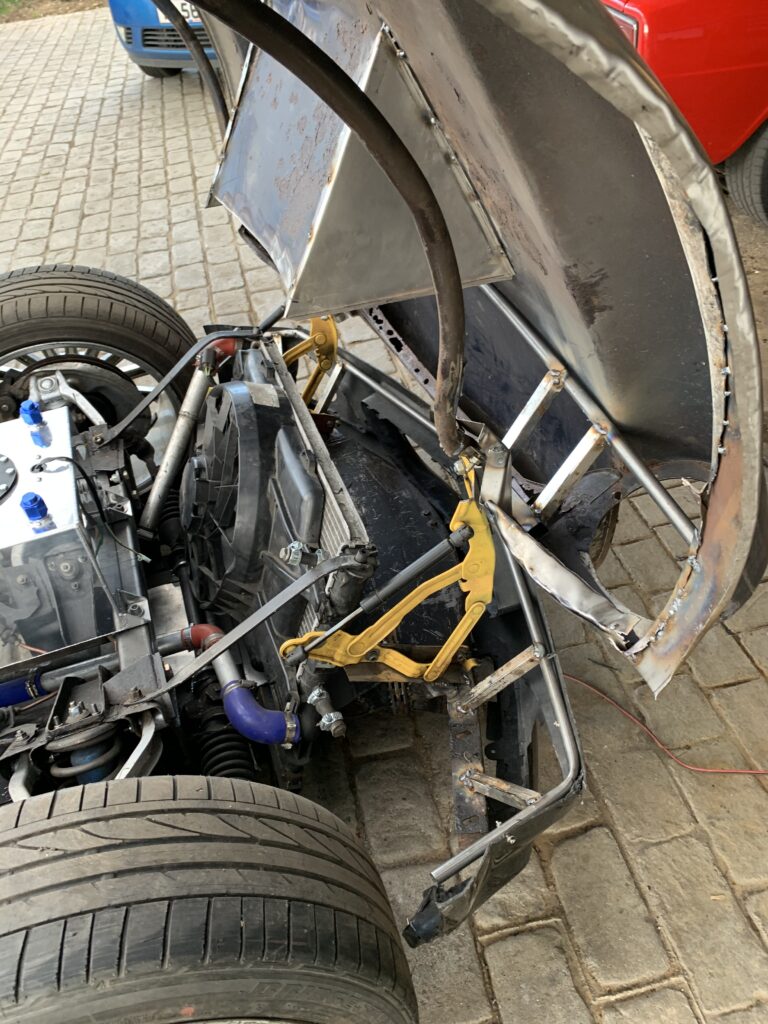
Between the 2 suspension uprights is a 2″ square steel bar, in an ordinary Spitfire the engine would act as a brace between the 2, this steel keeps the suspension uprights rigid. Connected to this brace is a 1″ square steel frame, this supports the 20l fuel cell.
With the Dolly Partons AKA Over riders gone, I now had space for a better bumper, I wanted one with a splitter, or at least something that looks like a splitter. Searching eBay I found someone selling a Vauxhall Astra bumper for £20, I offered £10 and bought it!
The bumper was way too wide, but the overall shape was spot on even the small angle at the front of the bonnet matched the bumper.
I had to cut about 2″ from the middle and 4″ from either end to make it fit. Then using a hot air gun I tried to weld the bits back together. To attach the bumper to the car, I made a frame from 3/4″ steel tube mounted to the front chassis .
Air is channeled through the bumper, through the radiator and up through the vent in the bonnet.. Should give a bit of down force when driving fast. I do remember my old Spitfires getting quite front light at anything over 60 mph as air gets trapped under the bonnet there is no chance if that happening with this car as the bonnet floor is sealed, so air can only come through the front and out the top.
